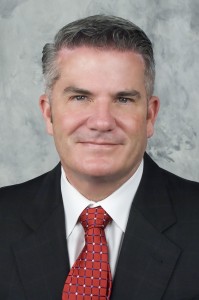Mar 4
2014
Real-Time Clinical Messaging Supports Quality Care

Guest post by Brian O’Neill, president and CEO, Office Ally.
As healthcare reform rolls out nationwide, medical providers at all points across the care continuum are acknowledging the critical role that practice management systems play in population health management. Moving onto an electronic medical record is an important first step. Maximizing the digital capabilities these systems provide is a close second priority – and one that can yield big dividends in enhanced communications and better patient care.
One of the stars in the pantheon of indispensible functionality is real-time clinical messaging. Similar to texting but on a grander scale, real-time clinical messaging notifies medical providers before, during or after patient encounters of the recommended procedures that will improve patient outcomes. The two-way messaging can come directly from outside sources, such as third party administrators, IPAs, health plans or accountable care organizations, as well as other parties important to the care of patients. Studies have shown that such real-time digital communication significantly improves quality of care and allows for better outcomes in disease management patients. It can also result in fewer hospitalizations and a reduction in serious medical errors.
Clinical messaging can also facilitate direct communication between the medical provider’s office and a health plan’s case manager. This uninterrupted linkage improves the timeliness of the care provided, allowing case managers to contact the physician’s office prior to a member’s appointment to discuss procedures to be provided. Clinical messaging also enables the electronic two-way transfer of documents between the physician and the health plan, while allowing the case manager to communicate with the provider’s office while the patient is present in ways that maximize the efficacy and efficiency of that visit.
Most important of all clinical messaging helps to improve quality, which is the reason the healthcare exists in the first place. It can accurately capture all of the mandated HEDIS preventive care measures, demonstrating compliance with HEDIS and NCQA standards in a manner that can improve the “Star Ratings.” Both have become standard measures of quality throughout the healthcare industry and are increasingly becoming tools that employers and individuals use in selecting healthcare providers.
As the concept of population health management takes hold, direct communication between patients and providers will become even more integral to the provision of quality care. Effective case management of chronic disease patients requires ongoing monitoring of vital biometrics, such as blood glucose, weight and blood pressure. This allows providers to detect any physical changes in a patient’s condition between appointments that warrant immediate attention. Direct communication can eliminate any delays in treatment, potentially avoiding hospitalization or other costly interventions.
Already, many physician offices are allowing patients to schedule, cancel or change appointments online. Patients can also request medication refills, check test results and keep track of their entire medical record through online communication and access. Population health management hinges on patients taking responsibility for their own health. Providing direct access to this information empowers patients to monitor their own health, ask the right questions and make better-informed decisions.
Of course, online communications will never take the place of an office visit. But it can be a great satisfier because patients have the option of saving time, money and hassle by communicating securely with their physician’s office online, especially for routine questions or administrative needs. And patients consistently rate communications with their provider as one of the most important factors in a satisfactory patient experience.
Online communication is a win-win for physicians and their staff, as well. It allows providers to spend more time with their patients in the office or the hospital, and less time handling routine tasks. It can also significantly reduce the amount of time that office workers have to spend on the phone fielding routine requests and inquiries.
Today’s health information technology allows physicians and allied medical professionals to harness the power of the Internet for instantaneous interactions on patient care. Through real-time clinical messaging, medical providers can streamline care provision, improve quality of care and score higher on patient satisfaction. Which, not coincidentally, are all in keeping with the Triple Aim of healthcare reform.
Brian O’Neill is president and CEO of Office Ally, offering electronic health records, clinical messaging and other revenue cycle management services to providers nationwide.